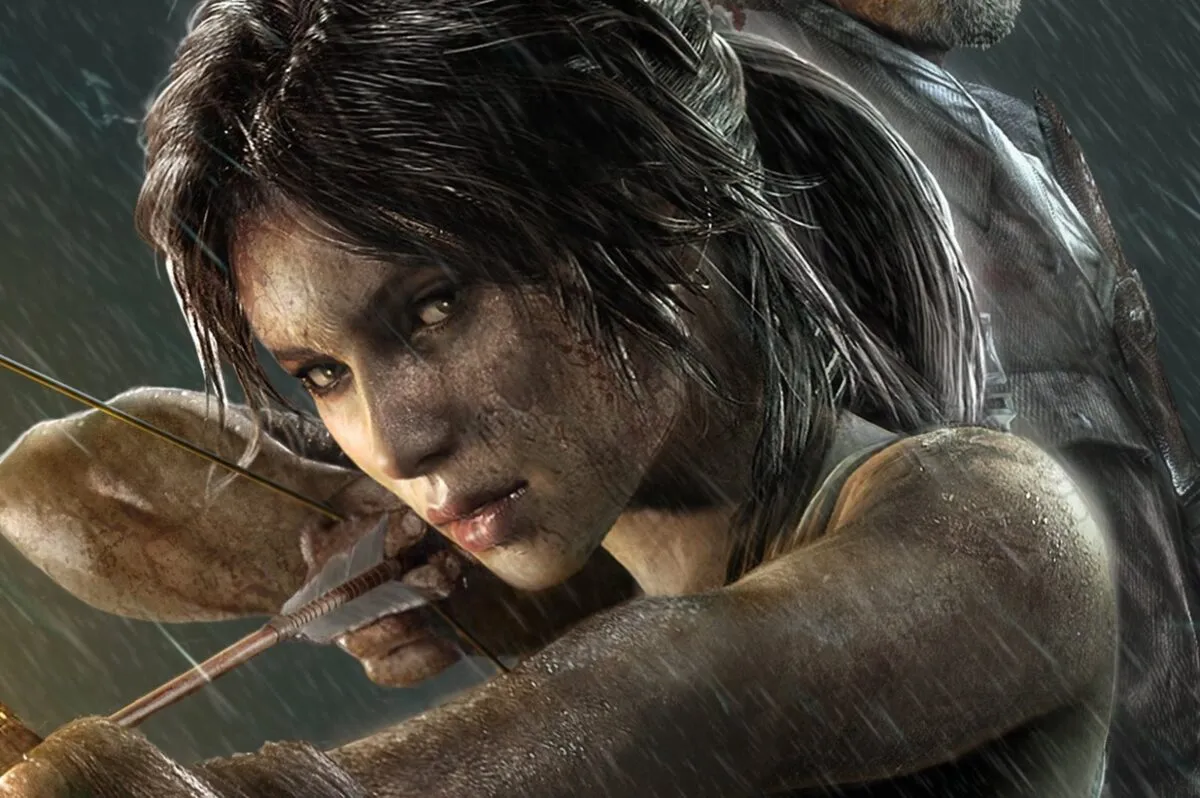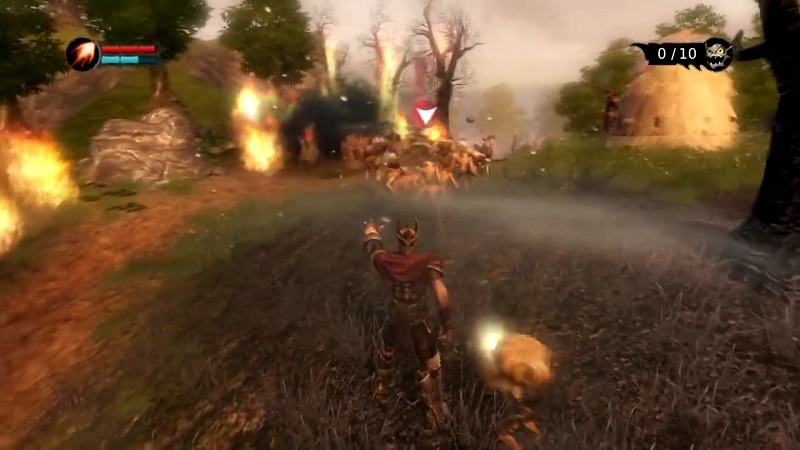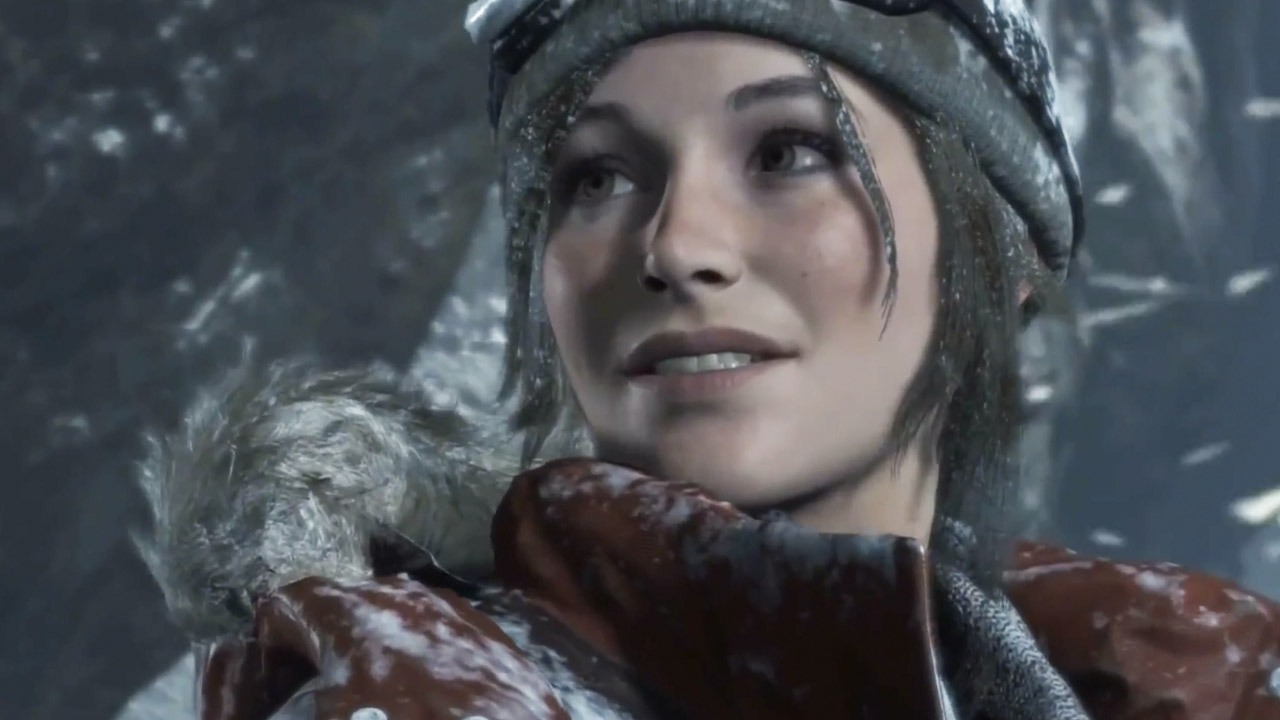When Tomb Raider was rebooted back in 2013, many were surprised and confused when Square Enix deemed its sales figures—3.4 million copies sold in its first month—to be a disappointment. For most games, those sales would be viewed as outstanding. But a lot had been invested in this reimagining of the franchise, and the response from Square suddenly cast doubt on whether Lara Croft had a place in the modern gaming atmosphere.
Obviously those doubts were assuaged with news that the 2013 title’s sales had increased to over 8.5 million, the bestselling game in the Tomb Raider franchise, and that a sequel was being made. Fans were of course excited because regardless of any talk about sales, the 2013 game was just a lot of fun. So getting to experience more of this reinvented Lara on her further adventures was definitely something to be enthusiastic about.
A lot has been made of the modern Lara Croft, and her evolution from her origins as a pioneer for female protagonists in games. And it’s the writers behind the new games who have shaped this reimagined Lara, particularly Rhianna Pratchett, the lead writer for the 2013 Tomb Raider and its sequel Rise of the Tomb Raider.
Pratchett’s career has spanned multiple mediums, but of course gamers will know her for her association with many high profile titles like Overlord, Mirror’s Edge, BioShock Infinite, and 2014’s Thief. Her work has been highly discussed and praised, with her writing for Rise of the Tomb Raider leading to her being a 2016 recipient of the Outstanding Achievement in Videogame Writing award from the Writers Guild of America, as well as the Outstanding Achievement in Character award from the D.I.C.E. Awards. I reached out to Pratchett to ask her about her work on the Tomb Raider franchise and her writing process as a whole.
TMS (Chris Isaac): Over your career, you’ve done work in journalism, comics, screenplays, and written for some books as well. But it’s your work in games that you’ve come to devote the most time to as your career has progressed. What is it about the medium that appeals to you as a writer and made you not just want to start in this kind of work, but has continued to draw your interest?
Rhianna Pratchett: I’ve been working in the games industry, in some form or another for most my adult life. Writing for games is still a relatively new territory when compared to writing for other entertainment media. It’s growing and adapting all the time, which makes it a tumultuous, but exciting, area to work in.
Do you have any inspirations in writing—not just in games, but across books, TV, or wherever else—that have helped shape your work, either starting out or even currently?
I used to read a lot as a kid. I don’t do it as much these days (to my shame) but I’m a big fan of Audible. I really enjoyed Tove Jansson’s Moomin books–they cultivate my love of cozy weirdness. I also grew up in the 80s–the heyday of fantasy and sci-fi films. I was definitely shaped by the likes of The Princess Bride, Time Bandits and the Conan, Aliens and Terminator movies. More recently it’s probably things like Joss Whedon’s oeuvre.
A lot of us can probably picture what it’s like to work on a story for fiction books since it’s typically a one-person job. But obviously you’re working in a different medium by writing for games, and that requires collaboration with a lot of different people. Can you explain ways that the process differs that you feel people might not be aware of? Like a book author just sits down and writes their ideas, but how different is it for you in terms of your influence on the plot versus working within someone else’s parameters?
One of the biggest misconceptions out there is that writers rock up to developers with their idea and the developer buys and makes it. Unless a writer works in-house at a studio it will usually be a case of the developer/publisher seeking out a writer, or writers, they’d like to work with. This is usually based on industry recommendations. Largely this is because games are not usually script or story-led unless they are in specific genres, usually adventure games and RPGs. Plus, the industry is still getting used to using professional writers on a regular basis.
If you’re employed as a contractor, you’ll usually be given a metaphorical box of narrative body parts with which to work with. These could be things like a rough spine of a story, artwork for setting and characters, whatever the developer has managed to come up with. Your job will be to flesh everything out and assemble it into a coherent story, taking in the considerations of the ever evolving gameplay. This often comprises a lot of backstory, world building and character work, alongside answers [to] a lot of the “why?” questions. If you are working in the AAA space you will have to do this in an almost continual headwind of feedback from the developer, publisher, consultant, play testers and IP holders.
On smaller teams you may get direct access to other team members such as level designers, artists and the audio department, which will allow you to better hone your script to the needs of gameplay and keep a little bit more control over it. The bigger the team the more your need to work with other people whose job it is to have one foot in the design camp and one foot in narrative. These are, unsurprisingly, known as narrative designers. However even on AAA projects you’ll also usually be working with a creative director, narrative director, story board artists and sometimes with the actors and audio department.
On bigger games it’s much harder to have an individual voice, because you are at the behest of so many other people’s opinions—people who usually have a lot more power than you do. Whilst you can make your mark, you will often find that a lot of the job is trying to make other people’s ideas work. The plus side is that you have access to some of the best technology, motion capture and actors out there and team members who are at the top of their game. On smaller games, you can often have more of an individual stamp (especially if you’re the only writer, like I was with Overlord) and you’ll get more creative freedom. However, just don’t expect the sexy tech and budget you get with AAA.
Obviously the part of your work that’s attracting a lot of attention right now is what you’ve been doing with the new Tomb Raider games. Were you surprised by the success of the rebooted series given how Lara’s character had lost some steam over the previous years?
Making AAA games is such hard work that you’re just glad to get through it in one piece. You never really have any idea how it’s going to go down with the outside world. It has been wonderful to see how well it’s gone down though.
At E3 we saw a couple longer-running franchises show off what looked like a new, slower, more emotion-driven style. One of the most interesting aspects of the new God of War was seeing Kratos actually interact with someone like a compassionate person for a change. And even Resident Evil 7 seemed to be departing from its action movie style developed over the previous few titles and going for carefully crafted scares. Judging by how well the new Tomb Raider games have been received by going in a similarly more thoughtful direction, do you think this is indicative that gamers are craving more depth from the action genre?
Pratchett: I think players want to see more characters that act like actual human beings once in a while. And given the high paced, often very violent gameplay (especially in the game[s] you mentioned) it can be hard to pull off.
Lara Croft receives a lot of attention due to her status as one of the pioneers of female characters in games, and how even today female leads in games are not as prevalent as male leads. Do you feel that places more scrutiny on your work when writing for a female character? Like in Overlord [above], you wrote for a male character who had the capacity to be an unrepentant scumbag, and the focal point was whether it was funny rather than whether it was okay to depict the Overlord that way. Obviously dramatic stories have different expectations than comedic ones, but even female-focused sitcoms like Girls or Orange is the New Black become talking point for depictions of female characters. So when writing a female character, do you feel there’s more pressure to “get it right”?
Female characters in games do tend to get scrutinized for how well they are “womaning” (much like high profile women in the real world) in a way that male characters don’t tend to. They are more readily accepted, warts and all. Female characters are expected to represent–and that can be a tall order. With Overlord I think it helped that the character (although somewhat male shaped) was essentially a blank slate, and therefore didn’t really have a character to speak of. The characters were those around him and the world and gameplay itself.
Amongst the praise for your depiction of Lara, I’ve also seen people who miss the original Lara’s personality. She’s often described as a female Indiana Jones, and some of the older games did have more of that light-hearted sense of an adventure filled with action and witty one-liners. Is that Lara one you’d like to have the current iteration evolve into, or do you find it more intriguing to try and keep her relatable since that’s still new territory for her?
Witty one-liners are fun, but they are pretty much a videogame cliché at this stage. I would’ve liked to have put a bit more humor in the game, but that’s not what Crystal wanted. Although I managed to sneak a bit more into the comics. I’d like to think that is a way to bring in more humor and make her relatable. I don’t think the two should be seen as mutually exclusive.
Another frequent topic of conversation has been the disparity between the Lara of the cutscenes who feels the weight of what she’s forced to do to survive, versus the Lara of the gameplay who is incentivized towards violence through things like earning experience points and weapon upgrades. You’ve talked about that in specific relation to Tomb Raider in previous interviews, so I’m more interested in that topic applied towards games in general. It seems like there’s a struggle in games between telling emotional stories while simultaneously keeping the player engaged. We’ve had “walking simulators,” as they’ve been dubbed, like Gone Home and Firewatch be highly praised for their writing while being criticized for lack of player involvement. Do you feel like a lot of games aren’t made with cohesion between those two areas in mind, like either the story or the gameplay winds up taking center stage to the detriment of the other half?
Even great stories like The Last Of Us have not been immune to criticism about how they incorporate their more “gamey” aspects. It’s a hard thing to balance, because elements like violent gameplay, high body counts, health pack healing, constant enemy chatter, collectables etc. add a fantastical underpinning that is inherently unrealistic, yet players often accept them as a given. In fact, they often desire them, because they can be great fun! But it’s tough to set a realistic and grounded story against gameplay that is anything but that. And it needs to be in some regards, otherwise Lara probably would’ve died in that opening cave. It sometimes feels like the more we focus on character and relatability, the more we expose how much gameplay can be at odds with that.
Thinking about narrative earlier on and having a strong commitment to creating a harmonious, rather than antagonistic, relationship between gameplay and narrative is the only way we’re going to get over this lack of cohesion. Story needs to be entwined with gameplay, not wrapped around it.
Among non-gamers, Lara has long had a perception as an oversexualized character. And admittedly, in her earlier years, the advertising surrounding the Tomb Raider games did skew that way. But even now with the marketing moving away from that, I’ve encountered people who assume the new games still promote that male fantasy. Do you feel that’s been an obstacle in rebooting her, or do you have the sense that non-gaming culture has been pretty cognizant of this shift, since the 2013 Tomb Raider looked to be evoking some Hunger Games imagery in the marketing?
Classic Lara and “new” Lara are both great characters. Sure, they’ve been angled in slightly different ways, but they are both strong, capable, resourceful and smart. Yes, classic Lara’s marketing was very much skewed “for the boys” which irritated me as a younger gamer, and I think did a bit of an injustice to Lara in the games. That’s definitely an angle that Crystal’s marketing didn’t take with new Lara, which I’m very glad about. Lara should be for everyone. For the most part, gamers have been pretty receptive to the new tone and take on her.
There’s a growing focus on the Tomb Raider movie reboot now that Alicia Vikander has been cast as Lara Croft. Word is the reboot will be adapting the story from the 2013 game you worked on. Fans are of course excited for another Tomb Raider movie in general, but people are also hoping to see the streak of bad video game movies finally be broken. As a writer, what thoughts do you have for why video game movies have struggled so much? For instance, what would you say was missing from the original Tomb Raider films, and how well do you think the 2013 game will translate to a cinematic experience?
I suspect that the Assassin’s Creed movie will be the one to break that first. In the past videogame movies have often had less than stellar production values, script and direction. As games get taken more seriously, so too, it seems, are their movie counterparts. I’m no expert on the previous Tomb Raider movies, although I remember vaguely enjoying the first. The casting of Alicia is very exciting and that gives me a lot of hope for the sensibilities behind the movie.
(Overlord screenshot courtesy of Codemasters and Triumph Studios; Tomb Raider images courtesy of Crystal Dynamics and Square Enix)
Chris Isaac is a Philadelphia writer and gamer who currently writes for Screen Rant. When he’s not busy writing in the third person, he does articles devoted to interviews with people in the game industry, offbeat essays, and generally things relating to feminism or geek culture. If you like those things, you should follow him on Twitter and he’ll fill your news feed with even more of those things.
—The Mary Sue has a strict comment policy that forbids, but is not limited to, personal insults toward anyone, hate speech, and trolling.—
Follow The Mary Sue on Twitter, Facebook, Tumblr, Pinterest, & Google+.











Published: Oct 10, 2016 10:53 am